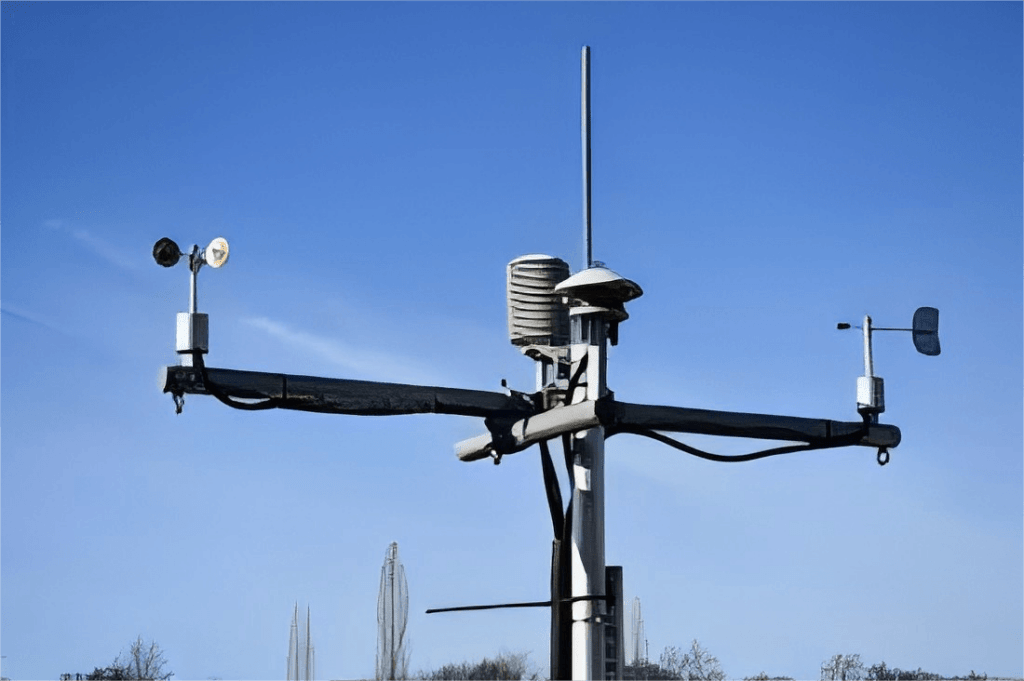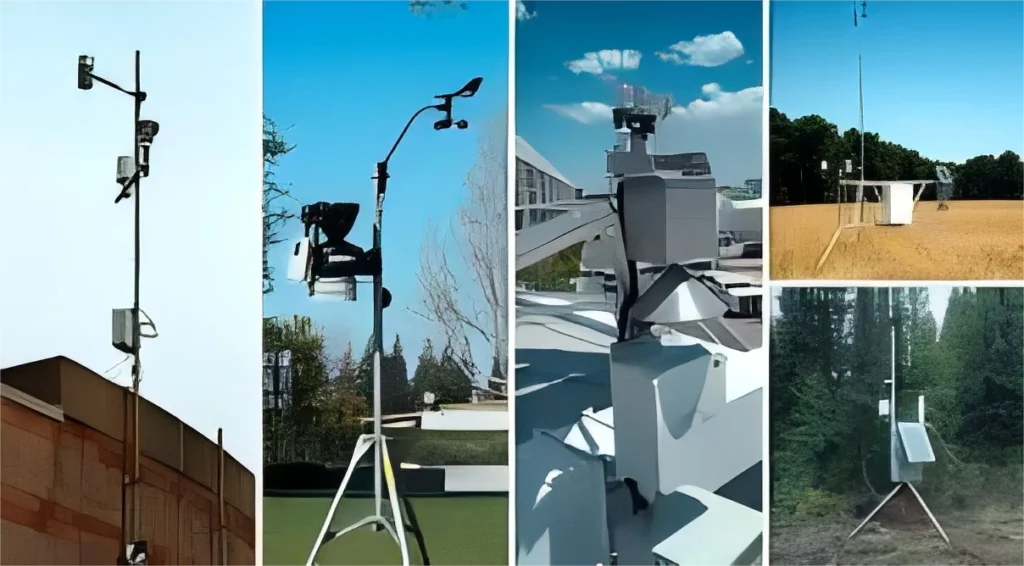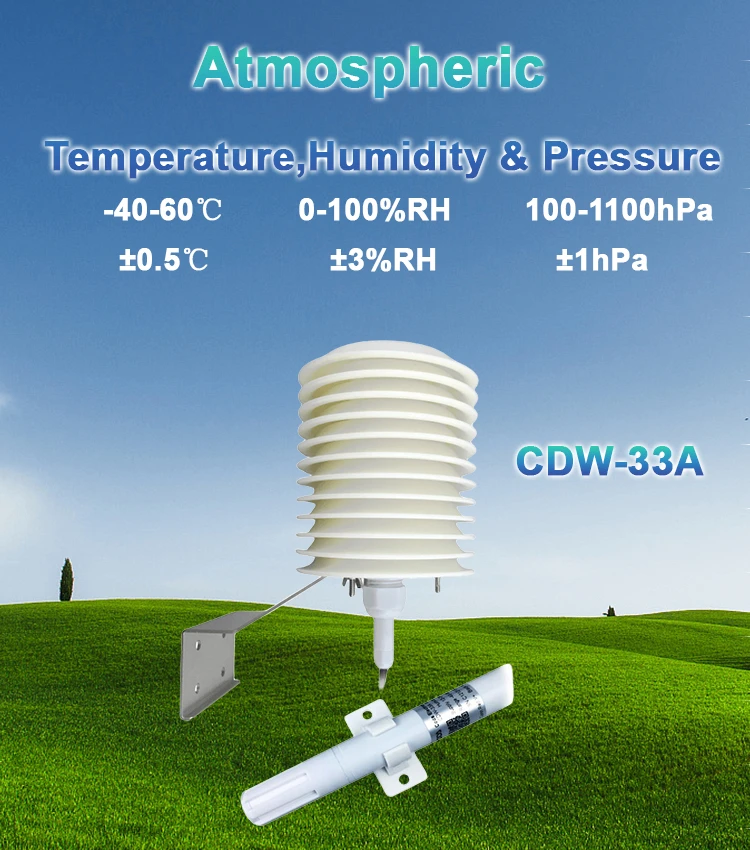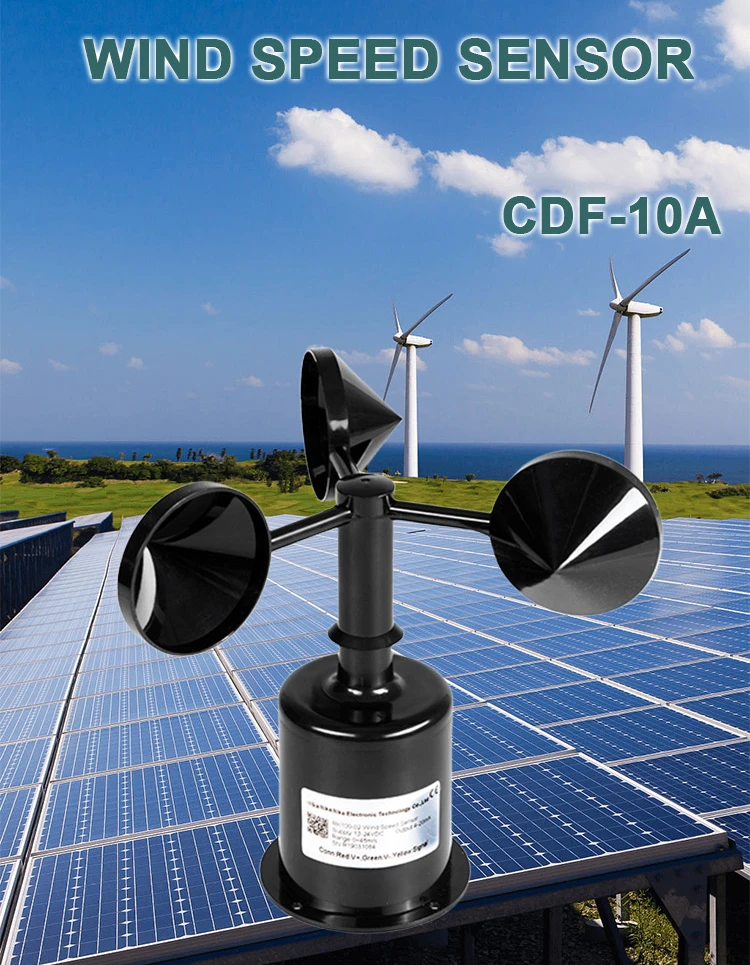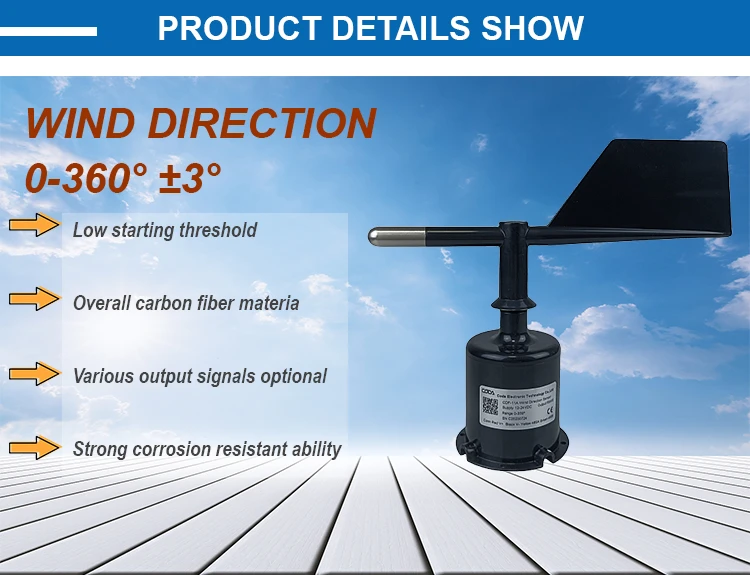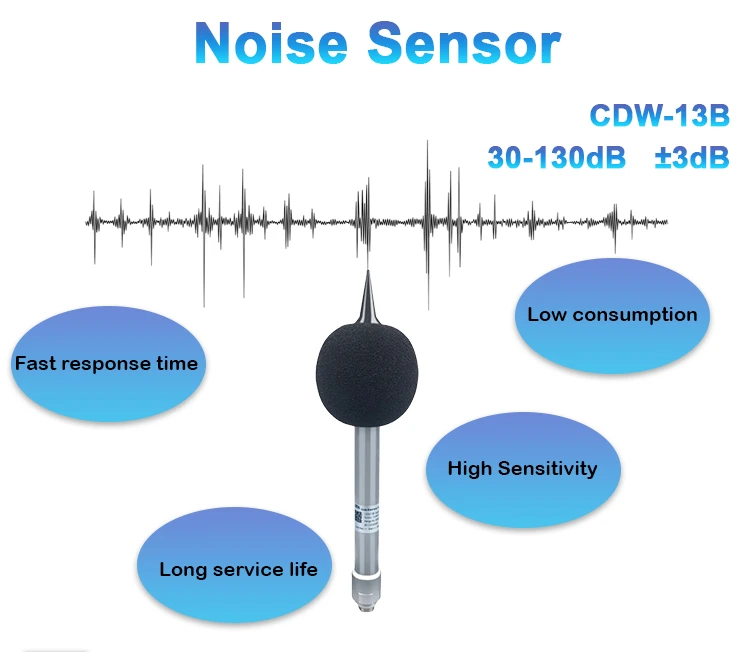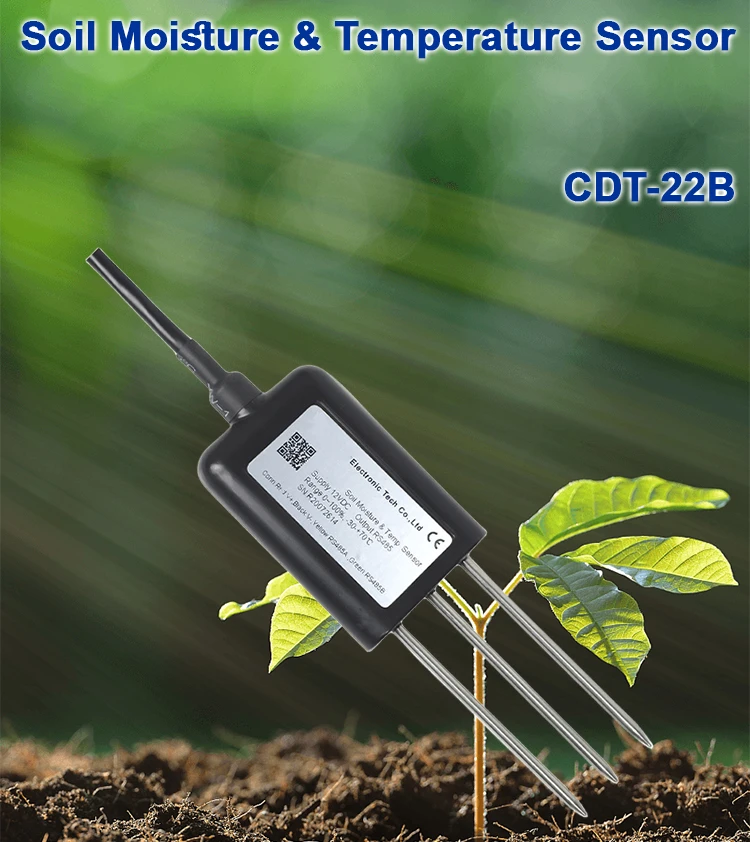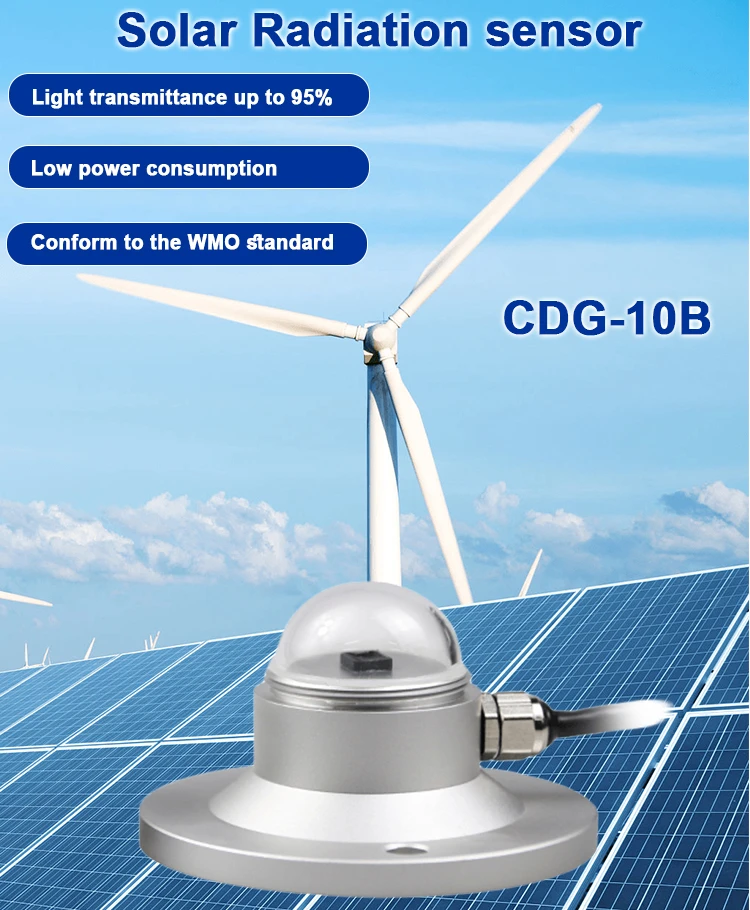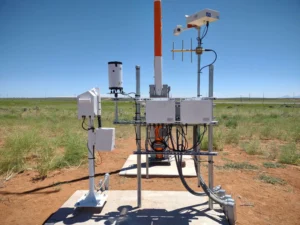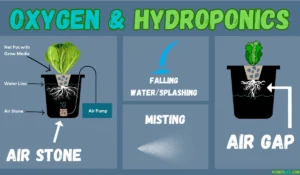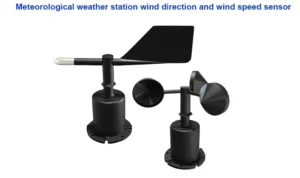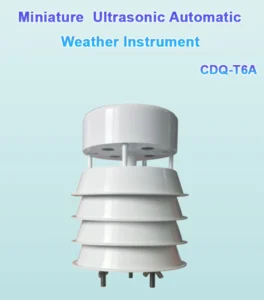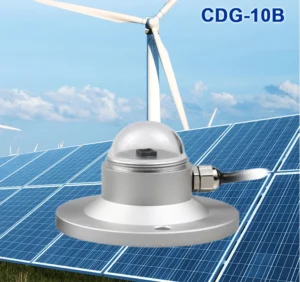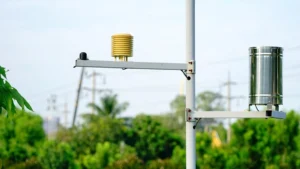Top 9 Weather Sensors for a Meteorological Station
A weather sensor is an instrument designed to measure and track meteorological station factors such as temperature, humidity, atmospheric pressure, wind speed, and wind direction. People typically install these sensors on weather stations, satellites, aircraft, ships, and various other platforms for weather observation.
The main goal of weather sensors is to gather and document data on atmospheric conditions to enhance our understanding and prediction of weather changes. Here are some reasons why weather sensors are crucial:
1.Weather forecasting:
Meteorological sensors supply real-time data that is vital for creating precise weather forecasts. By gathering information on atmospheric conditions, meteorologists can analyze weather patterns and produce accurate predictions.
2. Disaster surveillance and early alerts:
Meteorological sensors are instrumental in tracking severe weather conditions like storms, tornadoes, floods, and snowstorms. Having access to this information promptly enables early alerts, allowing individuals to implement suitable protective actions.
3. Agriculture and rural progress:
Meteorological sensors offer insights into soil moisture, rainfall, and temperature, which are vital for farming and rural advancement. Farmers and agricultural experts can utilize this data to strategize planting, manage water resources, and safeguard crops.
4. Aviation and maritime security:
Meteorological sensors are crucial in aviation and maritime sectors. They supply information on wind speed, direction, atmospheric pressure, and visibility, ensuring the safety of pilots and crews and aiding in the planning of flight and navigation paths.
5. Climate research:
Information gathered from meteorological sensors plays a crucial role in studying climate change and patterns. By monitoring different atmospheric components, researchers can gain a deeper understanding of the climate system and forecast future climate trends.
In essence, manufacturers craft weather sensors to gather and track data on weather elements, offering precise weather predictions, disaster alerts, support for agricultural growth, aviation and maritime safety, and aiding climate research.
Top 10 Weather Sensors for a Weather Station:
1.Sensors for Atmospheric Temperature, Humidity, and Pressure
1.1 Temperature Sensors:
These devices are designed to gauge atmospheric temperature. They employ various technologies, including thermocouples and thermistors, to transform temperature variations into electrical signals. People extensively utilize temperature sensors in weather stations, satellites, and other meteorological observation tools.
1.2 Humidity Sensors:
These sensors measure the moisture or water vapor levels in the atmosphere. They utilize methods such as hygroscopic materials, capacitors, resistors, or piezoelectric components to assess humidity. Humidity sensors play a crucial role in applications like forecasting precipitation, analyzing cloud formation, and managing agricultural irrigation.
1.3 Atmospheric Pressure Sensors:
Designers design these sensors to gauge air or atmospheric pressure within the environment.They often employ piezoresistive or piezoelectric technology to detect variations in air pressure. Atmospheric pressure sensors play a vital role in fields such as weather prediction, climate studies, and aviation, among others.
We can send the data collected by these sensors either wirelessly or through wired connections to weather monitoring stations, data loggers, or other data processing systems for analysis, research, and forecasting purposes.Collectively, they deliver precise measurements of atmospheric conditions and supply essential data for weather forecasting, climate research, and other related uses.
2. Wind Speed Sensors
People utilize wind speed sensors to assess the velocity of wind in the atmosphere, and they are a key element of weather sensor systems. Below is a concise overview of wind speed sensors:
The primary role of wind speed sensors is to gauge the wind velocity in the atmosphere and transform it into an electrical signal. We can employ various methods for this task, such as rotating, ultrasonic, and hot – wire sensors, among others.
2.1. Rotating wind speed sensors:
These sensors typically feature a rotating rod or vane that spins when the wind blows. By assessing the rotation speed or the rotation angle, we can determine the wind speed. People frequently utilize rotating wind speed sensors in settings like weather stations and wind farms.
2.2. Ultrasonic wind speed sensors:
These devices employ ultrasonic technology to gauge wind velocity. They determine wind speed by emitting ultrasonic waves and assessing the time it takes for the signal to travel and its direction. Known for their precision and quick response, people extensively utilize ultrasonic wind sensors in fields like aviation, meteorology, and marine operations.
2.3. Hot wire wind speed sensors:
These instruments leverage the heat dissipation properties of heated wires to assess wind velocity. Typically comprising one or more heated wires, they calculate wind speed by evaluating how much the wires cool when exposed to wind. People commonly place hot – wire wind speed sensors in environments such as weather stations and HVAC systems.
We can combine data collected from wind speed sensors with readings of other meteorological factors, such as temperature, humidity, and atmospheric pressure, to deliver more detailed weather insights. This information is crucial for weather prediction, climate studies, air travel, and the use of wind energy.
3. Wind direction sensors
People employ wind direction sensors to determine the wind’s direction, and they are a vital component of weather monitoring systems. Below is a concise overview of wind direction sensors:
The primary role of wind direction sensors is to assess the wind’s direction in the atmosphere and translate it into a corresponding electrical signal. They typically employ various technologies and designs to fulfill this function.
3.1. Directional wind direction sensors:
These sensors feature a rotating or pointing mechanism that shows the exact direction of the wind. Typically, they include a wind vane or arrow that shifts as the wind’s direction changes. The sensor identifies the wind’s direction by its rotation angle or pointing position. People frequently employ such pointing wind sensors in settings like weather stations and aviation.
3.2. Magnetic Wind Direction Sensors:
These devices use a magnetic component to gauge the wind’s direction. They generally consist of one or more magnetic sensors that respond to a magnetic field and alter when the wind blows. By assessing the changes in these magnetic sensors, we can ascertain the wind’s direction.
3.3. Photoelectric Wind Direction Sensors:
These devices employ the photoelectric effect to ascertain wind direction. Typically, they consist of a light source and a photosensitive component. As the wind blows, it alters the angle at which light hits the sensor, thereby influencing the output signal of the photosensitive element. By assessing the variation in this element, we can identify the wind’s direction. People extensively utilize photoelectric wind direction sensors in areas like weather stations and aviation navigation.
We can combine data from these wind direction sensors with other meteorological measurements, such as wind speed, temperature, and humidity, to deliver more detailed meteorological insights. This information is crucial for weather prediction, climate studies, aviation navigation, and the optimization of wind energy resources.
4. PM2.5 Sensor
People design a PM2.5 sensor to measure the concentration of fine particulate matter in the air, specifically particles with a diameter of 2.5 micrometers or smaller.These tiny particles pose significant health risks, as they can penetrate deep into the respiratory system and adversely affect the body.
The functionality of PM2.5 sensors typically relies on methods such as light scattering, laser scattering, or charge-coupled device (CCD) technology. As airborne particles move through the sensor, the sensor detects their concentration and converts it into an electrical signal for quantification.
People widely employ PM2.5 sensors for various purposes, including environmental and air quality monitoring, indoor air analysis, and personal health tracking applications.By providing insights into ambient pollution levels, these sensors enable individuals and organizations to take measures that improve air quality and safeguard health. Additionally, in certain regions, governments utilize these sensors to monitor air pollution trends and formulate environmental policies based on the collected data.
It is essential to recognize that while PM2.5 sensors play a crucial role in monitoring air quality, their selection and use must prioritize accuracy and reliability, adhering to applicable standards and regulations.
5. Noise Sensors
Noise sensors are devices designed to measure environmental noise levels. People commonly install them in diverse locations, such as city streets, factory boundaries, offices, and residential areas, to monitor and evaluate noise pollution.
These sensors operate using various techniques, including sound pressure level (dB) measurement and sound spectrum analysis. By capturing sound signals from the environment, they convert these acoustic inputs into corresponding electrical signals for further analysis.
Real-time noise level data from these sensors enables a better understanding of surrounding noise conditions. This information plays a crucial role in urban planning, environmental monitoring, traffic management, workplace safety, and more.
Widely utilized across different sectors, noise sensors are integral to urban noise monitoring systems, traffic management solutions, industrial applications, medical devices, and audio equipment. Their data supports governments and organizations in developing noise control strategies and policies, improving residents’ quality of life, ensuring workplace safety, and providing foundational insights for environmental protection and urban development.
When selecting and utilizing noise sensors, it is crucial to prioritize their accuracy, sensitivity, and reliability while adhering to applicable standards and specifications. Additionally, the placement of the sensor plays a significant role in obtaining precise measurements. We should carefully choose the location based on specific requirements to ensure accurate data collection.
6.CO2 Sensor
Carbon dioxide (CO2) sensors are instruments used to identify and measure the levels of CO2 present in a specific environment.They are widely used to monitor indoor air quality in spaces such as offices, schools, factories, and various other buildings.
These sensors typically operate using either infrared absorption technology or chemical sensor technology. Infrared absorption technology measures CO2 concentration by detecting how CO2 molecules absorb specific wavelengths of infrared light.In contrast, chemical sensors rely on chemical reactions to determine changes in CO2 levels. By providing real-time data on CO2 concentrations, these sensors enable effective monitoring of indoor air quality and facilitate timely measures to maintain a healthy environment.
The potential application areas of CO₂ sensors include, but are not limited to, the following fields:
1. Indoor air quality monitoring:
CO2 sensors play a crucial role in maintaining healthy environments in offices, schools, hospitals, and other indoor spaces. They help track CO2 levels to evaluate air quality and provide guidance for effective ventilation control.
2. Greenhouse gas monitoring:
CO2 sensors are essential in greenhouses and growing sheds to monitor CO2 concentrations, aiding in the optimization of conditions for plant growth.
3. Industrial process control:
In industrial production, CO2 sensors are used to monitor emissions, contributing to environmental protection efforts and enabling precise process management.
When we choose and utilize CO₂ sensors, we should carefully evaluate factors such as accuracy, response time, stability, and compatibility with specific environmental conditions. The placement of the sensor is equally critical to ensure it accurately reflects CO2 levels in the target area. Additionally, regular maintenance and calibration are indispensable for maintaining data reliability.
7. Illuminance Sensors
Illuminance sensors are tools specifically crafted to assess the level of light intensity in a given environment.These sensors are widely utilized in various applications, including indoor and outdoor lighting control, agricultural light optimization, building design, energy efficiency, and environmental monitoring.
The functioning of illuminance sensors typically relies on photosensitive elements such as photoresistors, photodiodes, or photosensitive capacitors. These components are highly responsive to changes in light intensity. When exposed to variations in light levels, their resistance, current, or capacitance adjusts accordingly. By capturing and converting these shifts, the sensor can deliver precise data about light levels.
Key applications of illuminance sensors include the following:
1. Indoor lighting control:
These sensors enable automatic adjustment of indoor lighting brightness based on ambient light conditions, enhancing energy efficiency and occupant comfort.
2. Agricultural light management:
In settings like greenhouses and plant growth facilities, illuminance sensors support optimal plant development by regulating light intensity to meet specific growth requirements.
3. Building design and energy efficiency:
By monitoring indoor and outdoor light levels, illuminance sensors provide valuable data that inform building designs and lighting layouts, contributing to energy savings and improved functionality.
4. Environmental monitoring:
These sensors help track light conditions in public areas, city streets, and other environments, offering data critical for urban planning and safety initiatives.
When selecting and using light level sensors, it is necessary to consider several factors, such as the sensor’s accuracy, response time, measurement range, and sensitivity to different light conditions.Proper selection of the installation location is equally essential to ensure the sensor effectively captures the light levels in the monitored area. Additionally, routine calibration and maintenance play a vital role in maintaining reliable and accurate data over time.
8.Soil Temperature and Moisture Sensors
Soil temperature and moisture sensors are designed to measure the temperature and moisture content of soil. These devices find extensive use in agriculture, horticulture, and environmental monitoring, where they play a vital role in assessing soil conditions for optimal irrigation and plant growth management.
The operational principles of soil temperature and moisture sensors can vary, employing different techniques to achieve measurements. Two widely used types are resistive and capacitive sensors.
8.1 Resistive Sensors: These sensors estimate soil moisture by detecting changes in electrical resistance. As soil moisture levels increase, the electrical conductivity of the soil improves, leading to a corresponding decrease in the resistance recorded by the sensor.
8.2 Capacitive Sensors: Capacitive sensors measure soil moisture by observing variations in the soil’s dielectric constant. An increase in moisture elevates the dielectric constant of the soil, which, in turn, raises the capacitance value detected by the sensor.
The primary uses of soil temperature and moisture sensors include:
1. Agricultural irrigation:
These sensors enable farmers to monitor soil moisture levels, helping to determine the optimal timing and quantity of water needed for irrigation. This promotes efficient water usage and conservation.
2. Plant growth management:
By providing essential data on soil temperature and moisture, these sensors assist in optimizing the growing environment for plant roots and support the development of effective fertilization strategies.
3. Soil quality monitoring:
Changes in soil moisture and temperature can be tracked using these sensors to evaluate soil quality and detect irregularities, such as waterlogging or drought conditions.
In the process of selecting and using soil temperature and moisture sensors, several factors should be taken into account, namely accuracy, response time, application range, durability, and the ease of installation and maintenance. Additionally, the requirements may vary based on specific plants and soil types, necessitating careful consideration of sensor features and appropriate installation depths tailored to individual needs.
9. Solar Radiation Sensors
Solar radiation sensors are instruments used to measure the intensity of sunlight. People widely utilize them in areas such as meteorology, environmental monitoring, and renewable energy systems.
These sensors typically operate using photosensitive components like silicon photocells or thermocouples. Such elements are highly responsive to solar radiation, generating either an electric current or a change in temperature when exposed to sunlight. By detecting and converting these variations, the sensors produce precise measurements of solar radiation levels.
The applications of solar radiation sensors encompass a wide range of uses, including the following:
1. Meteorological monitoring:
Involves the use of solar radiation sensors to measure the intensity of both solar and ultraviolet radiation. This data aids meteorologists in forecasting weather patterns and analyzing climate trends.
2. Renewable energy:
Solar radiation sensors play a key role in analyzing the sun’s radiation levels, offering valuable data to optimize the performance of solar panels and solar water heaters. This helps ensure the efficient utilization of solar energy.
3. Environmental monitoring:
These sensors can assess solar radiation in various environments, contributing to urban planning and safety monitoring. For instance, they are useful in measuring the heat island effects across different parts of a city.
4. Building design:
Architects can leverage solar radiation sensors to guide decisions regarding building orientation and window placement, maximizing the benefits of natural light and heat.
When choosing and applying solar radiation sensors, factors including accuracy, response time, measurement range, and sensitivity under diverse radiation conditions ought to be comprehensively evaluated.Additionally, selecting an appropriate installation site is vital to ensure the sensor accurately captures the solar radiation levels for the target area. Regular calibration and maintenance are equally important to maintain data reliability and accuracy.
